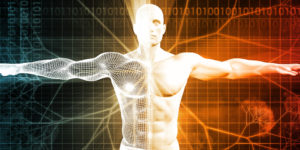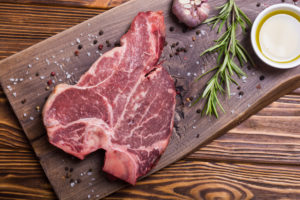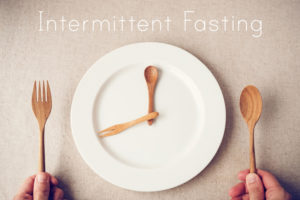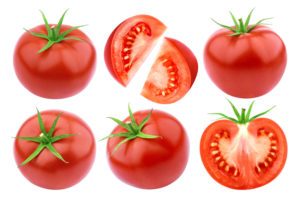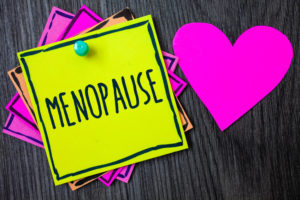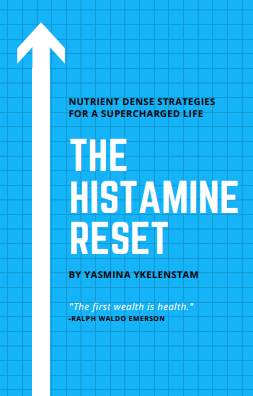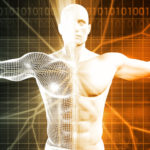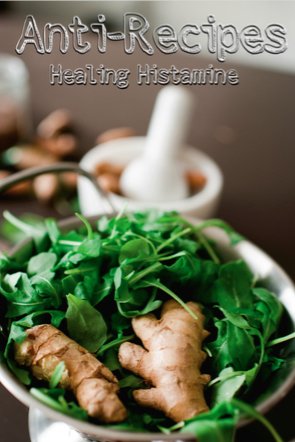
What’s the vagus nerve and why should you care about it? Research on the vagus nerve, which runs from the brain to the stomach, has been coming fast and furious in the last few years since I’ve been reading up on it. The nerve, hereafter referred to as the VG “interfaces” (I quote wikipedia here) with parasympathetic control of the heart and digestive tract.
In short, it’s pretty freaking important because it joins the heart, brain and stomach, which really explains just so much I’ve been trying to work out over the years. I’ve been holding off on sharing all this with you guys because researchers are churning out studies at an alarming rate, each day bringing a slew of new ideas into my inbox. Basically the vagus nerve affects how our brain signals the stomach: research now shows that faulty vagal messaging to the stomach can prevent us from experiencing satiety, thereby causing us to overeat; it affects the rate at which our heart beats, it plays a role in psychiatric disorders, it may be involved in POTS (Postural Orthostatic Tachycardia Syndrome), it’s helping Alzheimer’s patients, reversing rheumatoid arthritis, and researchers definitely believe that it’s a mega player in epilepsy.
Click here to learn how to create your own histamine balanced diet.
Very importantly to us, the VG can prevent inflammatory cytokines involved in mast cell disorders from being synthesised/released, specifically, in the stomach, one of our most common trouble areas. VG stimulation has been shown to reduce histamine-induced itching and a Tufts neuroscientist may have the explanation for why some of us have mast cell/histamine issues to begin with.
(You’ll find all references for this paragraph in the individual points below).
Most importantly, to me, this emerging body of research on the VG goes a long way towards explaining, finally, how the brain talks to the stomach and heart, and why it’s so important to control the messages sent back and forth.
Acetylcholine is the vagus nerve’s neurotransmitter, basically how it communicates with the rest of the body. This isn’t great news for many of us who have been taking Benadryl, Xanax, and various psych and stomach meds (more on that further down in the post) which all inhibit acetylcholine to some degree [1]. But forewarned is forearmed, and there are plenty of alternatives that don’t block this crucial neurotransmitter – your doctor will have more information on those, please do not stop taking any meds in the meantime as it’s dangerous and is waiting a week longer really going to make such a big difference?
Research thus far has focused on stimulating the VG using electrical devices which will go to market in coming years, once they’re approved. Right now there’s one such device in beta testing, but it’s only available if you’re epileptic (I’m sorry I can’t find the email they sent me).
But don’t worry – in a moment I’ll share how we can stimulate vagal function without any space age technology to zap ourselves silly with.
First, the research….
A neuroscientist at Tufts, Michael Van Elzakker, proposes the Vagus Nerve Infection Hypothesis (VNIH), stating that an infection of the vagus nerve, even a minor one (like herpes), triggers a “difficult to detect” immune system response which produces the fatigue in chronic fatigue. Now, maybe I’m reaching here, but by now many of us are aware that histamine/mast cell activation can be secondary to an infection/virus (if not I suggest buying Dr. Diana Driscoll’s book for an explanation), so this theory could conceivably explain the mast cell issues some of us have, especially those of us who struggle with fatigue (as I did for decades). Read more here.
Vagus nerve stimulation can reduce histamine-induced itching [2]
A study in the Journal of the American Academy of Neurology tells us that VG stimulation can reduce histamine-induced itching.
Vagus nerve stimulation regulates intestinal mast cells [3]
An interesting study in the American Journal of Physiology showed that certain fats can stimulate the VG into regulating the activation of mast cells in the gut.
Stimulation of the vagus nerve fights mast cell induced inflammation [4]
The Feinstein Institute recently published the exciting news that single low magnitude electric pulses to vagus nerve fight inflammation. They found that stimulating the vagus nerve for as little as half a millisecond is enough to inhibit tumour necrosis factor (TNF). TNF is a inflammatory signalling molecule produced by mast cells and others, thereby regulating other immune cells. The Feinstein Institute recently completed a clinical trial on using VG stimulation to treat RA and it currently exploring a similar treatment for Crohn’s.
Vagus nerve stimulation fights or helps prevent depression and other neuropsychiatric conditions [5]
A study in Brain Behaviour and Immunology tells us that vagus stimulation blocks IL-6 dependent hyper excitability induced by stress, which means that VG activation may help prevent or treat neuropsychiatric disease. This ties in with Dr. Theoharides of Tufts research on the mast cell-psych link (read more about that here). This study (and others) suggest “a potential new avenue in the treatment of a large class of hyper excitable neuropsychiatric conditions, including epilepsy, schizophrenic psychoses, anxiety disorders, autism spectrum and depression.”
Vagal stimulation prevents the release of multiple mast cell inflammatory cytokines [6]
Another study published in the journal Nature shares that vagus nerve stimulation can help us fight potentially deadly inflammation that results from our system fighting bacterial infection. The study authors point out that we achieve homeostasis by balancing the activities or pro-inflammatory and anti-inflammatory pathways. Endotoxins, produced by all gram-negative bacteria, activates the immune system, causing them to release inflammation. Acetylcholine, the principal vagal neurotransmitter, significantly prevented the release of TNF, interleukins (IL)-1, (IL)-6 (and others), all key players in mast cell disorders.
Acetylcholine is the primary vagus nerve neurotransmitter. Older generation antihistamines like Benadryl and others including anti-anxiety meds, antidepressants, and others prescribed for gastrointestinal complaints, inhibit this neurotransmitter to some degree. You can ask your doctor for a list and for further advice.
The Journal of Affective Disorders tells us there’s evidence that increased levels of Interleukin 1 and TNF is known to play an important role in Encephalomyelitis/Chronic Fatigue Syndrome (ME/CFS), because activation of inflammatory pathways is known to induce fatigue and somatic symptoms [5].
Vagus nerve stimulation and Alzheimer’s [7]
A small study had patients experiencing an improvement of symptoms through VG stimulation. Alzheimer’s and Parkinson’s have been linked to mast cell activation – see Dr. Theoharides site for more information.
Stimulating the vagus nerve is giving rheumatoid arthritis patients their life back [8]
It’s believed that in contrast to medications for RA, electrical vagus nerve stimulation restores the body’s natural immune function rather than disabling it. The body can then respond normally to infection rather than being more prone to it.
Great – so this all sounds exciting, but how do we apply it without getting cyborg-like implants?
Here are some ideas for you (in no particular order):
1. ACUPUNCTURE
A study in the Journal of Alternative and Complementary medicine showed that traditional acupuncture points may offer vagus nerve stimulation [9].
A study published in the Evidence Based Complementary and Alternative Medicine journal proposes that acupuncture to the ear stimulates the vagus nerve [10].
2. MEDITATION
In a Time Magazine article “The Biology of Kindness” author Maia Szalavitz shared the results of a study published in Psychological Science showing that links being kind and compassionate with enhanced vagus nerve function. Study participants embarked on a six-week course focusing on loving kindness meditations [11].
3. CHANTING
Yes, I mean like OMMMMmmmmmmm. A study by the Department of Psychiatry and the Advanced Center for Yoga and National Institute of Mental Health and Neurosciences in India published in The International Journal of Yoga, found that chanting OM (many youtube videos on this) led to an increase in vagal activation. In short, it was also great for the heart! Ujaii breath, used in yoga practice (again on youtube), offered similar results, but it’s unknown if it was due to vagal stimulation. The long and short of it, whether through vagal stimulation or not, the study showed the same positive outcome to the body as if the vagus nerve was stimulated [12 + 13].
4. PRANAYAMA (yoga breath)
This study in the Journal of Alternative Medicine shared that as “Vagal cardiac and pulmonary mechanisms are linked, and improvement in one vagal limb might spill over into the other. Baroreceptor sensitivity can be enhanced significantly by slow breathing (supported by a small reduction in the heart rate observed during slow breathing and by reduction in both systolic and diastolic pressure). Slow pace bhastrika pranayama (respiratory rate 6/min) exercise thus shows a strong tendency to improving the autonomic nervous system through enhanced activation of the parasympathetic system.” [14] There are many great books and youtube videos on this amazing practice.
5. EAT HEALTHY
Eating a diet that supports proper vagus nerve function…
a. Vitamins B6, B12 and folic acid are needed [15]. I eat a lot of duck eggs, salmon and now am able to take a B12 supplement for the first time in years.
b. Dopamine is needed. Meditate, do yoga, be happy, eat (super duper fresh) fish if you are able to [16].
Finally…
I also asked Joseph Cohen over at SelfHacked for any research he has come across on VG stimulation. He’s heavily invested in researching his genetics and offers paid consultations to read your genetic test results. I’m planning a whole separate post on this but Joseph’s reading of my results led to a complete re-think of my approach to the mast cell (and brain fog) issues I had been dealing with. Basically, stress is my biggest issue and I needed to learn how to control that. You can contact Joseph here.
Joseph’s DIY vagus nerve stimulation tips
- ICES/PEMF (R, R2) – use on your gut and brain…I notice my gut flow increases and inflammation is reduced everywhere when I put this on my gut and brain. I believe this is from vagal nerve stimulation, given that we know the vagus nerve is stimulated by magnets. The referenced studies show that as well.
- Breathing out as hard as possible or holding your breath for a few seconds (R),
- Dipping your face in cold water(R)
- Gargling,
- Singing loudly,
- Tongue depressors – to stimulate the gag reflex….use gently…These are like push-ups for your vagus nerve…
- Coughing or tensing the stomach muscles that you’d use to go number 2 (that’s my rewording of this one!. (R)
You’ll find recipes full of foods with antihistamine and anti-inflammatory properties my books Anti-Recipes and The Anti-Cookbook
CLICK HERE TO CREATE YOUR OWN PERSONALISED HEALING HISTAMINE PLAN.
Please remember, even antihistamine and anti-inflammatory foods can hurt us, please always exercise caution and consult a medical practitioner before adding new foods.
—————-REFERENCES—————-
[1] https://healinghistamine.com/antihistamines-increase-alzheimers-risk/
[2] http://www.ncbi.nlm.nih.gov/pubmed/12105316
[3] http://www.ncbi.nlm.nih.gov/pubmed/23812038#
[4] http://www.eurekalert.org/pub_releases/2015-05/nsij-sle051215.php
[5] http://www.nature.com/nature/journal/v405/n6785/full/405458a0.html
[6] http://www.ncbi.nlm.nih.gov/pubmed/21975140#
[7] http://www.researchgate.net/publication/11023722_Cognition-enhancing_effect_of_vagus_nerve_stimulation_in_patients_with_Alzheimer’s_disease_a_pilot_study
[8] http://www.huffingtonpost.com/2015/05/29/hacking-the-nervous-syste_n_7469526.html
[9] http://www.ncbi.nlm.nih.gov/pubmed/24359451
[10] http://www.hindawi.com/journals/ecam/2012/786839/
[11] http://healthland.time.com/2013/05/09/why-kindness-can-make-us-happier-healthier/?iid=hl-main-lead
[12] http://www.ncbi.nlm.nih.gov/pmc/articles/PMC3099099/
[13] http://www.hindawi.com/journals/ecam/2013/743504/
[14] http://www.ncbi.nlm.nih.gov/pubmed/19249921
[15] http://www.ncbi.nlm.nih.gov/pubmed/19892133
[16] https://en.wikipedia.org/wiki/Dopamine

